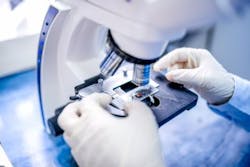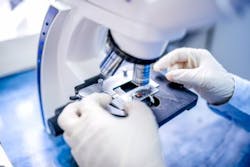Laser-enabled imaging method identifies cause of tumor resistance to angiogenesis inhibitors
Using an imaging method that uses a laser to assist with analysis, researchers at the Medical University of Vienna (Austria) and collaborators from Hungary and Sweden have shown that the success of specialized drugs to inhibit blood supply to tumors—angiogenesis inhibitors-—is compromised by the fact that these drugs do not effectively penetrate the tumor tissue and, therefore, do not reach the smallest blood vessels in the tumor.
Angiogenesis (the formation of new blood vessels from existing ones) significantly contributes to tumor growth, as tumors need oxygen and nutrients to progress. Several drugs are aimed at inhibiting angiogenesis. However, the benefit of this specialized cancer treatment does not always last long and certain types of cancer hardly respond to it, if at all. This resistance to angiogenesis inhibitors is a widespread problem in everyday clinical practice.
The scientists involved in the study have now shown that penetration of these angiogenesis inhibitors within the tumor tissue is very variable. This means that only a few cancer cells are reached by an effective concentration of the drug. In their study, tumors were treated with five different angiogenesis inhibitors in a mouse model. Using matrix-assisted laser desorption ionization mass spectrometry imaging (MALDI-MSI), the researchers were able to measure the concentration and distribution of the cancer drug in the tumor tissue and correlate them with the drug's efficacy.
"Previous research into the mechanisms of resistance to angiogenesis inhibitors predominantly focused on molecular factors," explains Balazs Döme, head of the translational thoracic oncology program in the Division of Thoracic Surgery at the Medical University of Vienna and lead investigator on the research team. "By focusing on the inhomogenous and, therefore, suboptimal distribution of the active agents in the tumor tissue, our team was able to identify an important mechanism that explains why angiogenesis inhibitors are sometimes ineffective in clinical use."
"The diminished efficacy of this cancer treatment is also probably due to the fact that it was previously impossible to reliably image the distribution of the drugs in the tumor tissue," adds György Marko-Varga, head of the Clinical Protein Research and Imaging research group in the Division of Biomedical Research at Lund University in Sweden, who is the team's joint lead investigator. "Our new method therefore offers cancer researchers and oncologists the opportunity to gain a better understanding of how these drugs behave and how they are distributed in the body and the tumor tissue."
The researchers believe that the results of their study should subsequently lead to the development of new treatment strategies to improve the distribution and efficacy of angiogenesis inhibitors in tumor tissue in the future.
Full details of the work appear in the journal Theranostics; for more information, please visit http://dx.doi.org/10.7150/thno.16767.

